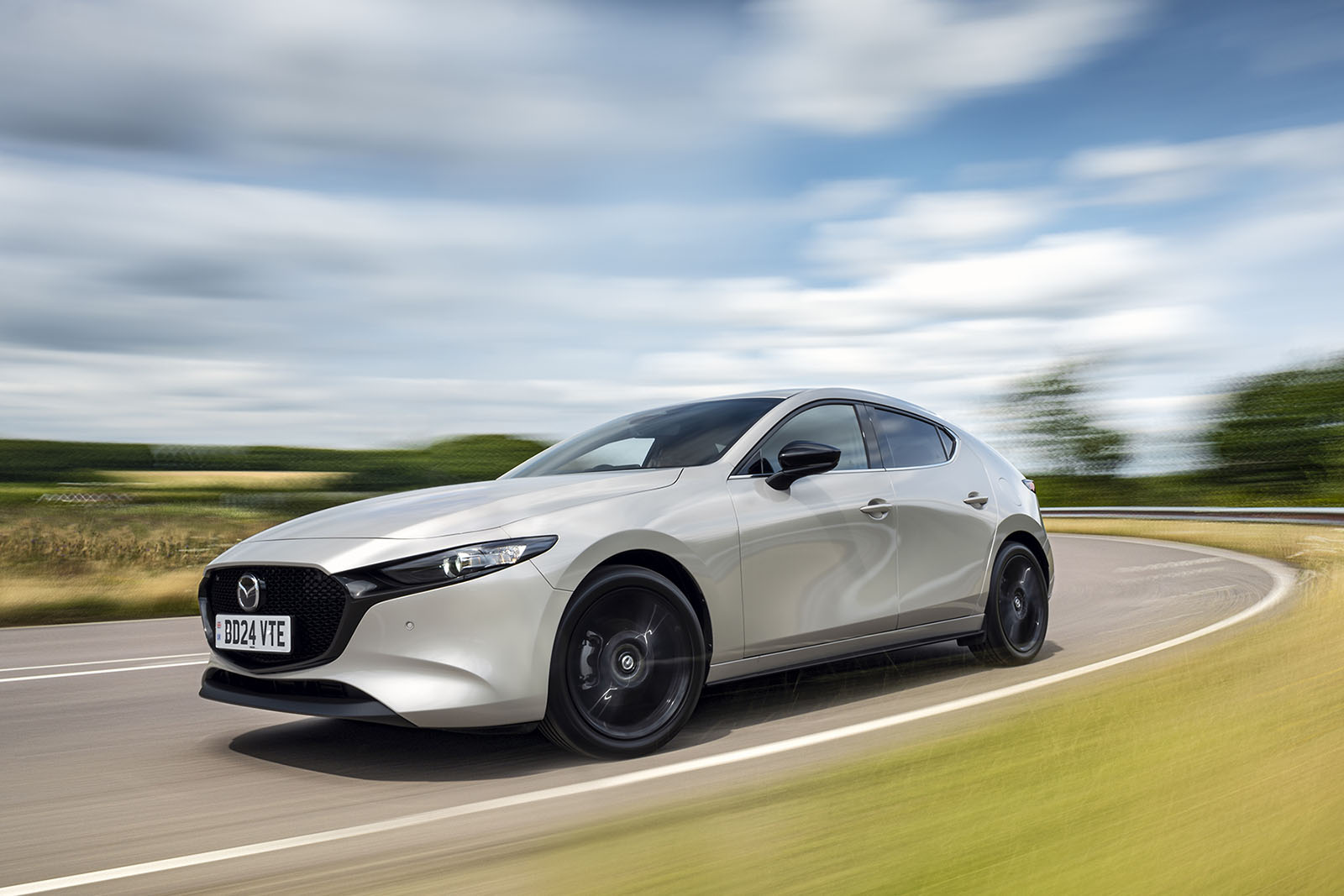Given the technologically innovative measures it uses to go about its business, this new Skyactiv-X engine sounds and feels surprisingly ordinary during day-to-day use.
When we originally road tested the Skyactiv-X, we noted that there was a vaguely rough, diesel-like edge to its timbre at idle and when accelerating through the lower reaches of the rev range, which morphs into a slightly coarse four-cylinder buzz as the crankshaft spins up to the 6500rpm limiter. Otherwise, it behaves like a pretty typical normally aspirated engine. It may be ground-breaking in what it does, but doesn’t feel much that way in how it does it. Later versions seem to be smoother but no more characterful.
There are two distinct sides to its power delivery. It’s very happy to potter about at exceedingly low revs, with no buzzing or groaning to indicate you’re lugging the engine. That gives the impression of torqueiness, but sadly it’s only an impression because when you put your foot down for a bit more acceleration, it’s got very little to give unless you shift down several gears and send it to the redline.
The engine will oblige with linear acceleration and good throttle response, but due to the long, economy-optimised gearing, that redline is long way away and as the revs climb, there’s little sense of high-rev vigour to report on. It simply does not feel like it makes the claimed power figure.
Our timing gear supported that. The Mazda’s 0-60mph time of 9.1sec was slower than the supposedly less powerful Mercedes A200 (7.8sec) and Volkswagen Golf 1.5 eTSI (8.3sec). Admittedly we did test both those rivals with automatic transmissions, but that excuse doesn’t apply for the in-gear acceleration figures. In fourth, the Mazda required 14.2sec to accelerate from 30mph to 70mph, whereas the turbocharged Mercedes and Volkswagen did it in 9.6sec and 9.1sec, respectively.
We’ve not performance tested a later, updated Skyactiv-X, but it doesn’t take timing gear to notice that its six additional horses haven’t made a huge difference to the raw performance.
We would probably stick with the cheaper new 2.5-litre Skyactiv-G, which has plenty of accessible torque. It comes to the car from the larger Mazda CX5, and is being added to the CX30 in similar vein. It’s a particularly long-stroke four-cylinder, and in supplanting the old 2.0-litre unit, supplies enough of a boost to accessible torque to cut the 0-62mph sprint by almost a second in 3’s with a manual gearbox. Peak power’s capped at a pretty modest 138bhp so as not to tread on the toes of the more advanced 2.0-litre engine; but, at that crankspeed, you can tell it would be ready to produce more, if allowed to.
There’s that unmistakable ‘big-four buzz’ about the car’s refinement levels, which used to be more common in compact cars, but has now long been widely superseded by turbocharging. The engine vibrates a bit at particular crankspeeds, in the way that four-cylinders tend to; but it’s not thrashy or even especially noisy in the broadest sense – and it’s far from unpleasant to take to task.
Mostly, it just gets on with making plenty of torque at accessible engine revs; responding in lovely, immediate, linear fashion to throttle inputs; and making this car feel assertive when accelerating in way that allows you to shift up early, and to avoid the lengthy forays towards the redline that you might expect to be necessary in a normally aspirated petrol family car.
Is it real-world economical? Well, no revelation; but it’s not at all bad. We got close to a 50mpg average return over a week of mixed short- and longer-range testing, and saw evidence that 55mpg+ longer trips, under moderate inputs, are certainly possible.
With either engine, the 3’s manual gearbox is a real selling point for keener drivers. The throws are not quite as short and mechanical as in the Mazda MX-5, but just comparing it to one of the greatest manual shifts you will find at any price should tell you how good it is. Every gear engages positively but without balking, and you can perform fingertip changes, or flash the lever through as you see fit.

